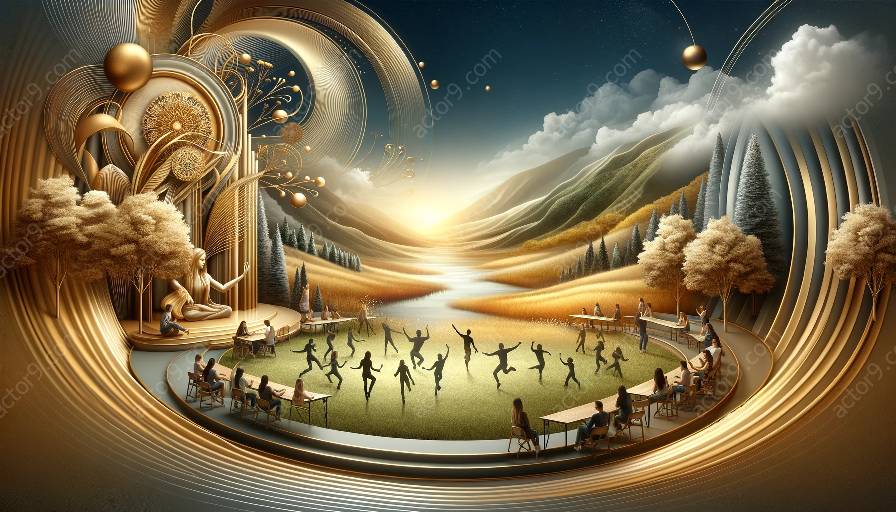Physical theatre, as an art form that combines movement, storytelling, and expression, offers a unique and valuable contribution to the educational experience. This immersive and multidisciplinary approach can significantly enhance learning outcomes and engage students on a profound level. In this comprehensive exploration, we delve into the benefits of integrating physical theatre into education, its role in fostering creativity, critical thinking, and empathy, and how it opens doors to cross-cultural understanding and self-expression.
Understanding Physical Theatre
Before delving into its role in education, it's essential to understand physical theatre. Physical theatre is a genre of performance that emphasizes movement, gesture, and physical expression, often relying on the body as the primary means of storytelling and communication. This dynamic art form encompasses a wide range of techniques, including mime, dance, acrobatics, and other physical disciplines, all integrated to convey narratives and emotions.
Physical Theatre in Education
The integration of physical theatre into educational settings provides students with a unique and enriching experience. Its immersive nature captivates students' attention, allowing them to learn through embodiment and sensory engagement, which not only makes learning more enjoyable but also enhances retention and understanding. Through physical theatre, students are encouraged to step out of their comfort zones, promoting personal growth, self-confidence, and self-expression.
Enhancing Learning Outcomes
Physical theatre contributes to the educational experience by enhancing learning outcomes. It cultivates creativity, imagination, and problem-solving skills, as students are required to think critically and innovatively to convey emotions and ideas through physical movements and expressions. This art form also fosters collaborative skills, as students work together to create and perform pieces, ultimately leading to a supportive and interconnected learning environment.
Empathy and Cross-Cultural Understanding
One of the profound impacts of physical theatre in education is its ability to foster empathy and cross-cultural understanding. Through embodying characters and narratives from diverse cultural backgrounds, students develop a deeper appreciation and understanding of the world around them. They learn to empathize with different perspectives and experiences, reinforcing their ability to connect with others on a human level and promoting inclusivity and open-mindedness.
Role in Self-Expression and Confidence Building
Physical theatre provides a platform for students to explore and express their emotions, thoughts, and experiences in a non-verbal manner. This aspect is particularly beneficial for students who may struggle with traditional verbal communication, offering them an alternative means of self-expression. Furthermore, as students gain proficiency in physical theatre, they build confidence in their abilities to perform, communicate, and connect with others, contributing to their overall personal and academic growth.
Bringing Stories to Life
Another compelling aspect of physical theatre in education is its ability to bring stories and historical events to life. By embodying characters and historical contexts through physicality and movement, students develop a deeper understanding and connection to the narratives they are exploring, making history and literature come alive in a visceral and tangible way.
Critical Thinking and Problem-Solving
Physical theatre challenges students to think critically and creatively. As they devise movements and gestures to convey specific emotions, themes, and narratives, they engage in a nuanced exploration of characters and ideas, honing their analytical and interpretive skills.
Conclusion
Physical theatre significantly contributes to the educational experience by promoting creativity, critical thinking, empathy, and self-expression. Its immersive and multidisciplinary approach enriches learning outcomes, fosters cross-cultural understanding, and provides students with valuable skills for personal and academic growth. By integrating physical theatre into education, educators have the opportunity to create dynamic and engaging learning environments that empower students to explore, connect, and learn in profound and meaningful ways.




































